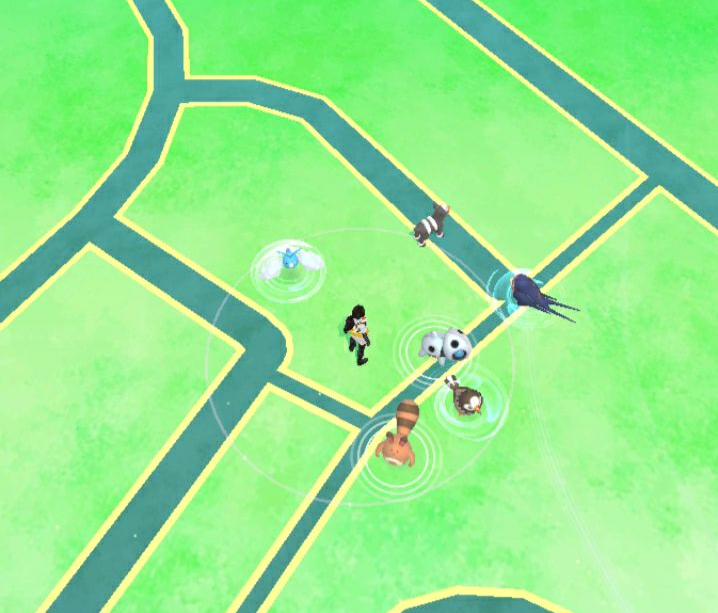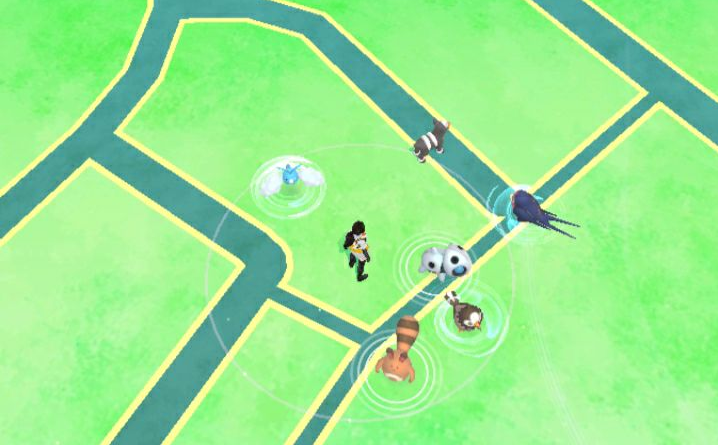Lures VS Incense in Pokemon GO
Not everyone lives in a massive city with hundreds or even thousands of Pokestops. Some places, like where I live, have small pockets of high density Pokestops, but trail off quite quickly. Other places have pretty much nothing when it comes to Pokestops, and rely solely on one tiny spawn point, or the daily spawn of one Pokemon.
Luckily though, there is a way or two that you can force Pokemon to spawn. If you have a Pokestop nearby, you can deploy a Lure module on it, and Pokemon will spawn at the Pokestop one at a time, as long as the Lure is active. On the other hand, we have Incense, which also spawns Pokemon but doesn’t rely on a Pokestop. But these two ways of spawning Pokemon have their own drawbacks.

Slow and steady
Lure Modules come in many colours, but they all do pretty much the same thing. When you put a Lure Module on a Pokestop, a small particle effect plays above the Pokestop, and occasionally a Pokemon spawns near the Pokestop. This continues for 30 minutes, then disappears. If a Pokestop does have a Lure Module on it, you can see the player responsible for the Lure by tapping on and looking at the name above the Pokestop. Any Pokemon spawned by the Lure Module will have the same CP and stats regardless to the (level 30+) player who may catch them.
However this can backfire a bit. If you can only access a Pokestop from one side, then you won’t be able to see any new spawns. And if you are in a particularly busy area, Lure Module spawns will overlap normal spawns.
Fast, perhaps too fast?
On the other end of the scale, we have Incense. Incense works similarly to a Lure Module, except you are the lure and Pokemon spawn around you. However, because of the pandemic, Incense got massively buffed, to the point that it’s actually useful. Originally, an Incense would last 30 minutes and spawn Pokemon, one at a time, for the incense’s duration. Rather paradoxically, old Incense would spawn more Pokemon the faster the speed you are traveling at. But at the same time, it’s very easy to go over the in-game speed limit, making it so Pokemon spawn and you can’t catch them. Even so, you’d only get 5-10 Pokemon from an incense, as they spawned once every 5 or so minutes.
These days however, Incense is a great item for any player regardless of location. An Incense will spawn a Pokemon every 1-2 minutes, meaning you get about 55 Pokemon per Incense. Incense is also often buffed on Community Days and events, so it spawns even more Pokemon.
There’s still a downside though. A Pokemon spawned by an Incense will only last a minute before it despawns. Which means you really need to keep an eye on it. Traveling somewhere with a lot of Pokestops and spawns means that your Incense Pokemon are often hard to see, or are overlapped by an already existing wild spawn.
What’s better?
Overall, Incense is definitely better than a Lure Module. It spawns more Pokemon, to a point that you can miss some if they despawn too quickly. But Pokemon spawned by Incense are generally more aggressive and more likely to flee.
The best way to use a Lure Module on the other hand is to sit down and camp at a Pokestop, catching whatever spawns, which will last for more than 90 seconds. Lure Modules also have different flavours, allowing you to get a better and more specific range of Pokemon. Lure Modules are also required for several evolutions, such as Magnezone and Goodra, which are things an Incense can’t do at all.
Alternatively, work towards nominating new Pokestops
I’m not actually sure that Pokestops mean more spawns, but it doesn’t hurt to try and add more Pokestops over all. Once a player hits level 38, they become eligible to submit nominations for new Pokestops. The process can seem a little daunting, but it’s easier than you think. Pretty much every small town has something to nominate, like a church, a town hall or a post office.
If you are going to do this though, I recommend at the very least, getting Ingress. Ingress is Niantic’s own game, but works on a similar premise to Pokestops in Pokemon GO. More importantly though, it shows additional landmarks that aren’t always visible in Pokemon GO, because they’d be too close together. Ingress shows all portals nearby with no restrictions. If you want to get serious about making new Pokestops, then you’ll also want to look at Wayfarer. This is where nominations are voted on, and it gives a lot of valuable information on what makes a good submission. After all, we always need more Pokestops, and there’s always some waiting to be nominated or voted on…
